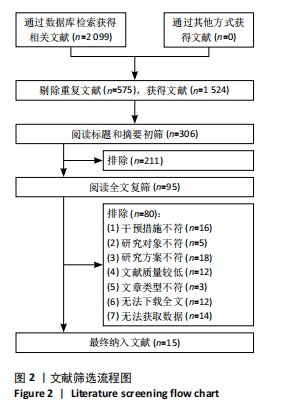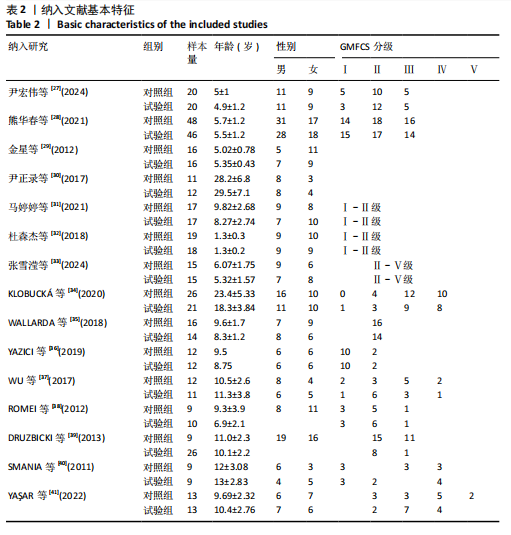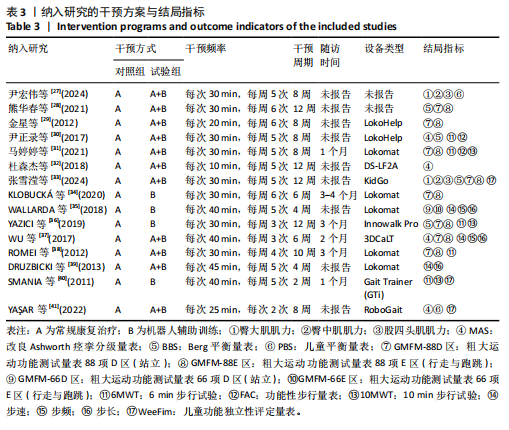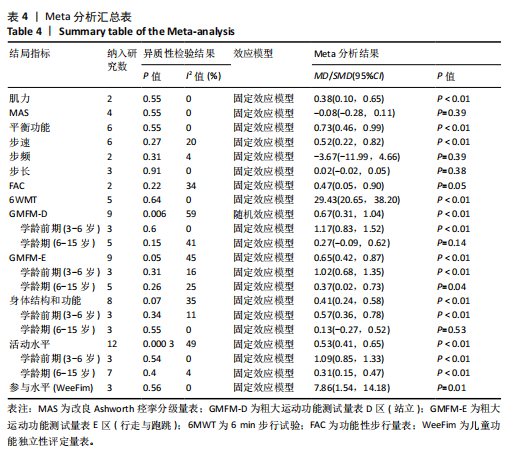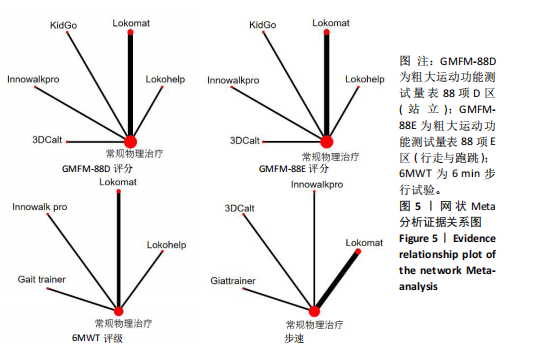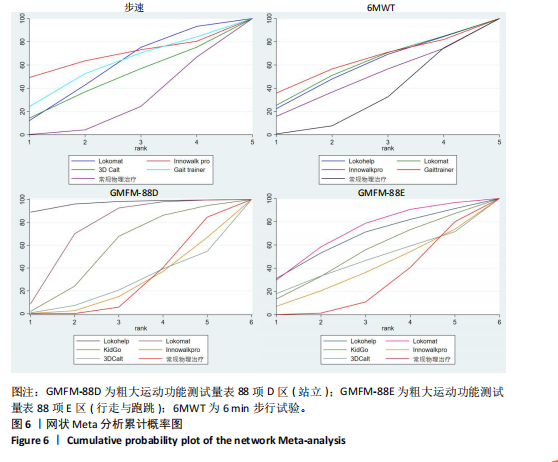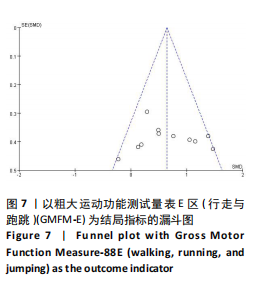[1] BROMHAM N, DWORZYNSKI K, EUNSON P, et al. Cerebral palsy in adults: summary of NICE guidance. BMJ. 2019;364:l806.
[2] COOPER MS, MACDONALD-LAURS E, ANTOLOVICH GC. Cerebral palsy: A neurodevelopmental disorder with motor disability. Dev Med Child Neurol. 2024. doi: 10.1111/dmcn.15960.
[3] SEWELL MD, EASTWOOD DM, WIMALASUNDERA N. Managing common symptoms of cerebral palsy in children. BMJ. 2014;349:g5474.
[4] SHEKARI Z, SADEGHIAN AFARANI R, FATOREHCHY S, et al. Relationship Between Postural Asymmetry, Balance, and Pain in Children With Spastic Cerebral Palsy. Pediatr Neurol. 2024;155:84-90.
[5] BELIZÓN-BRAVO N, ROMERO-GALISTEO RP, CANO-BRAVO F, et al. Effects of Dynamic Suit Orthoses on the Spatio-Temporal Gait Parameters in Children with Cerebral Palsy: A Systematic Review. Children (Basel). 2021;8(11):1016.
[6] NOVAK I, MORGAN C, ADDE L, et al. Early, Accurate Diagnosis and Early Intervention in Cerebral Palsy: Advances in Diagnosis and Treatment. JAMA Pediatr. 2017;171(9):897-907.
[7] BEKTESHI S, MONBALIU E, MCINTYRE S, et al. Towards functional improvement of motor disorders associated with cerebral palsy. Lancet Neurol. 2023;22(3):229-243.
[8] KORZENIEWSKI SJ, SLAUGHTER J, LENSKI M, et al. The complex aetiology of cerebral palsy. Nat Rev Neurol. 2018;14(9):528-543.
[9] SHIH STF, TONMUKAYAKUL U, IMMS C, et al. Economic evaluation and cost of interventions for cerebral palsy: a systematic review. Dev Med Child Neurol. 2018;60(6):543-558.
[10] 李晓捷,邱洪斌,姜志梅,等.中国十二省市小儿脑性瘫痪流行病学特征[J].中华实用儿科临床杂志,2018,33(5):378-383.
[11] STATES RA, SALEM Y, KRZAK JJ, et al. Three-Dimensional Instrumented Gait Analysis for Children With Cerebral Palsy: An Evidence-Based Clinical Practice Guideline. Pediatr Phys Ther. 2024;36(2):182-206.
[12] DE MIGUEL-FERNÁNDEZ J, LOBO-PRAT J, PRINSEN E, et al. Control strategies used in lower limb exoskeletons for gait rehabilitation after brain injury: a systematic review and analysis of clinical effectiveness. J Neuroeng Rehabil. 2023;20(1):23.
[13] VOLPINI M, AQUINO M, HOLANDA AC, et al. Clinical effects of assisted robotic gait training in walking distance, speed, and functionality are maintained over the long term in individuals with cerebral palsy: a systematic review and meta-analysis. Disabil Rehabil. 2022;44(19):5418-5428.
[14] BONANNO M, MILITI A, LA FAUCI BELPONER F, et al. Rehabilitation of Gait and Balance in Cerebral Palsy: A Scoping Review on the Use of Robotics with Biomechanical Implications. J Clin Med. 2023;12(9):3278.
[15] MANIKOWSKA F, BRAZEVIC S, KRZYŻAŃSKA A, et al. Effects of Robot-Assisted Therapy on Gait Parameters in Pediatric Patients With Spastic Cerebral Palsy. Front Neurol. 2021;12:724009.
[16] ABIDIN N, ÜNLÜ AKYÜZ E, CANKURTARAN D, et al. The effect of robotic rehabilitation on posture and trunk control in non-ambulatory cerebral palsy. Assist Technol. 2022. doi: 10.1080/10400435.2022.2059592.
[17] KIRTON A, METZLER MJ, CRAIG BT, et al. Perinatal stroke: mapping and modulating developmental plasticity. Nat Rev Neurol. 2021;17(7):415-432.
[18] PERPETUINI D, RUSSO EF, CARDONE D, et al. Identification of Functional Cortical Plasticity in Children with Cerebral Palsy Associated to Robotic-Assisted Gait Training: An fNIRS Study. J Clin Med. 2022;11(22):6790.
[19] SUCUOGLU H. Effects of robot-assisted gait training alongside conventional therapy on the development of walking in children with cerebral palsy. J Pediatr Rehabil Med. 2020;13(2):127-135.
[20] PERI E, TURCONI AC, BIFFI E, et al. Effects of dose and duration of Robot-Assisted Gait Training on walking ability of children affected by cerebral palsy. Technol Health Care. 2017;25(4):671-681.
[21] VEZÉR M, GRESITS O, ENGH MA, et al. Evidence for gait improvement with robotic-assisted gait training of children with cerebral palsy remains uncertain. Gait Posture. 2024;107:8-16.
[22] 黄信萍,吴娟妹,吴莹莹,等.下肢康复机器人步态训练对脑性瘫痪儿童下肢功能疗效的Meta分析[J].中国儿童保健杂志,2023,31(11):1241-1247.
[23] LIM JH, KANG EY, PARK SJ, et al. Effects of robot rehabilitation on the motor function and gait in children with cerebral palsy: a systematic review and meta-analysis. J Exerc Rehabil. 2024;20(3):92-99.
[24] AURICH-SCHULER T, WARKEN B, GRASER JV, et al. Practical Recommendations for Robot-Assisted Treadmill Therapy (Lokomat) in Children with Cerebral Palsy: Indications, Goal Setting, and Clinical Implementation within the WHO-ICF Framework. Neuropediatrics. 2015;46(4):248-260.
[25] 姜静远,邱卓英,王国祥,等.世界卫生组织国际健康分类家族在康复中系统应用的方案与路线图[J].中国康复理论与实践,2020,26(11):1241-1255.
[26] 中国康复医学会儿童康复专业委员会,中国残疾人康复协会小儿脑性瘫痪康复专业委员会,中国医师协会康复医师分会儿童康复专业委员会.中国脑性瘫痪康复指南(2022)第一章:概论[J].中华实用儿科临床杂志,2022,37(12):887-892.
[27] 尹宏伟,余永林,杨安琪,等.下肢外骨骼机器人步行训练对痉挛型双瘫脑性瘫痪患儿平衡功能的影响[J].中国康复医学杂志,2024,39(3):340-346.
[28] 熊华春,陈精慧,王军,等.下肢康复机器人训练对痉挛型脑瘫患儿粗大运动功能及平衡功能的影响[J].郑州大学学报(医学版),2021,56(3):370-375.
[29] 金星,孟兆祥,尹正录,等.康复机器人辅助步行训练对脑瘫患儿步行能力的影响[J].中国康复医学杂志,2012,27(9):822-824.
[30] 尹正录,孟兆祥,薛永骥,等.康复机器人辅助步行训练对成年脑性瘫痪患者步行能力的影响[J].中国康复医学杂志, 2017,32(1):97-99.
[31] 马婷婷,张皓.机器人辅助步态训练对痉挛型脑性瘫痪患儿运动和步行功能的效果[J].中国康复理论与实践,2021, 27(11):1260-1265.
[32] 杜森杰,张跃,李红英,等.儿童爬行促通训练机器人在痉挛型双瘫患儿康复中应用的效果[J].中国康复理论与实践, 2018,24(10):1195-1200.
[33] 张雪滢,何娜,黄艳.KidGo外骨骼康复机器人训练对痉挛型脑性瘫痪患儿下肢运动功能的影响[J].中华物理医学与康复杂志,2024,46(2):129-133.
[34] KLOBUCKÁ S, KLOBUCKÝ R, KOLLÁR B. Effect of robot-assisted gait training on motor functions in adolescent and young adult patients with bilateral spastic cerebral palsy: A randomized controlled trial. NeuroRehabilitation. 2020;47(4):495-508.
[35] WALLARD L, DIETRICH G, KERLIRZIN Y, et al. Effect of robotic-assisted gait rehabilitation on dynamic equilibrium control in the gait of children with cerebral palsy. Gait Posture. 2018;60:55-60.
[36] YAZICI M, LIVANELIOĞLU A, GÜCÜYENER K, et al. Effects of robotic rehabilitation on walking and balance in pediatric patients with hemiparetic cerebral palsy. Gait Posture. 2019;70:397-402.
[37] WU M, KIM J, ARORA P, et al. Effects of the Integration of Dynamic Weight Shifting Training Into Treadmill Training on Walking Function of Children with Cerebral Palsy: A Randomized Controlled Study. Am J Phys Med Rehabil. 2017;96(11):765-772.
[38] ROMEI M, MONTINARO A, PICCININI L, et al. Efficacy of robotic-assisted gait training compared with intensive task-oriented physiotherapy for children with Cerebral Palsy.Physical Therapy. 2012;72(15): 1890-1894.
[39] DRUŻBICKI M, RUSEK W, SNELA S, et al. Functional effects of robotic-assisted locomotor treadmill thearapy in children with cerebral palsy. J Rehabil Med. 2013; 45(4):358-363.
[40] SMANIA N, BONETTI P, GANDOLFI M, et al. Improved gait after repetitive locomotor training in children with cerebral palsy. Am J Phys Med Rehabil. 2011;90(2):137-149.
[41] YAŞAR B, ATICI E, AZIM REZAEI D, et al. Effectiveness of Robot-Assisted Gait Training on Functional Skills in Children with Cerebral Palsy. J Pediatr Neurol. 2022;20(3):164-170.
[42] BAX MC, FLODMARK O, TYDEMAN C. Definition and classification of cerebral palsy. From syndrome toward disease. Dev Med Child Neurol Suppl. 2007;109:39-41.
[43] GHAI S, HAKIM M, DANNENBAUM E, et al. Prevalence of Vestibular Dysfunction in Children With Neurological Disabilities: A Systematic Review. Front Neurol. 2019; 10:1294.
[44] MORGAN P, MURPHY A, OPHEIM A, et al. Gait characteristics, balance performance and falls in ambulant adults with cerebral palsy: An observational study. Gait Posture. 2016;48:243-248.
[45] KANASHVILI B, MILLER F, CHURCH C, et al. The change in sagittal plane gait patterns from childhood to maturity in bilateral cerebral palsy. Gait Posture. 2021;90:154-160.
[46] 朱志浩,石斌,王晶.脑瘫步态康复机器人研究进展[J].机器人,2023,45(5):626-640.
[47] 陶璟,霍宇飞,于随然.面向儿童的下肢康复外骨骼机器人研发进展[J].中国康复医学杂志,2021,36(11):1445-1449.
[48] LOBATO GARCIA L, GONZÁLEZ GONZÁLEZ Y, et al. Beneficios de la robótica en la rehabilitación de la marcha en la parálisis cerebral: una revisión sistemática [Benefits of robotics in gait rehabilitation in cerebral palsy: A systematic review]. Rehabilitacion (Madr). 2020;54(2):128-136.
[49] CHIU HC, ADA L, BANIA TA. Mechanically assisted walking training for walking, participation, and quality of life in children with cerebral palsy. Cochrane Database Syst Rev. 2020;11(11):CD013114.
[50] LAPORTA-HOYOS O, FIORI S, PANNEK K, et al. Longitudinal assessment of brain lesions in children with cerebral palsy and association with motor functioning. Eur J Paediatr Neurol. 2024;49:27-34.
[51] HILDERLEY AJ, WRIGHT FV, TAYLOR MJ, et al. Functional Neuroplasticity and Motor Skill Change Following Gross Motor Interventions for Children With Diplegic Cerebral Palsy. Neurorehabil Neural Repair. 2023;37(1):16-26.
[52] JULIEN L, MOREAU-PERNET G, ROCHETTE E, et al. Robot-assisted gait training improves walking and cerebral connectivity in children with unilateral cerebral palsy. Pediatr Res. 2024. doi: 10.1038/s41390-024-03240-1.
[53] BERGER A, HORST F, STEINBERG F, et al. Increased gait variability during robot-assisted walking is accompanied by increased sensorimotor brain activity in healthy people. J Neuroeng Rehabil. 2019;16(1):161.
[54] CRAIG BT, HILDERLEY A, KINNEY-LANG E, et al. Developmental neuroplasticity of the white matter connectome in children with perinatal stroke. Neurology. 2020;95(18):e2476-e2486.
[55] DAN B. Intensive repetitive motor training: how does it work in children with cerebral palsy? Dev Med Child Neurol. 2021;63(9):1008.
[56] REID LB, PAGNOZZI AM, FIORI S, et al. Measuring neuroplasticity associated with cerebral palsy rehabilitation: An MRI based power analysis. Int J Dev Neurosci. 2017;58:17-25.
[57] HANNA SE, ROSENBAUM PL, BARTLETT DJ, et al. Stability and decline in gross motor function among children and youth with cerebral palsy aged 2 to 21 years. Dev Med Child Neurol. 2009;51(4):295-302.
[58] CLOODT E, LINDGREN A, RODBY-BOUSQUET E. Knee and ankle range of motion and spasticity from childhood into adulthood: a longitudinal cohort study of 3,223 individuals with cerebral palsy. Acta Orthop. 2024;95:200-205.
[59] KLOBUCKÁ S, KLOBUCKÝ R, KOLLÁR B. The effect of patient-specific factors on responsiveness to robot-assisted gait training in patients with bilateral spastic cerebral palsy. NeuroRehabilitation. 2021; 49(3):375-389.
[60] DE BENEDICTIS A, ROSSI-ESPAGNET MC, DE PALMA L, et al. Structural networking of the developing brain: from maturation to neurosurgical implications. Front Neuroanat. 2023;17:1242757.
[61] KIM M, PARK C, JEON H, et al. Comparative effects of community-based family-child-centered care and conventional pediatric rehabilitation for cerebral palsy. NeuroRehabilitation. 2021;49(4):533-546.
[62] DIOT CM, YOUNGBLOOD JL, FRIESEN AH, et al. Robot-Assisted Gait Training with Trexo Home: Users, Usage and Initial Impacts. Children (Basel). 2023;10(3):437. |
